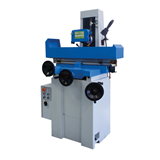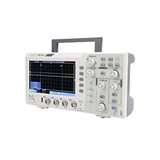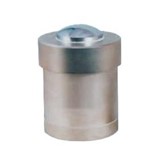Key Takeaways
- Move beyond reactive maintenance. Waiting for equipment to break is the most expensive strategy. A structured maintenance schedule can reduce unexpected downtime by up to 30%.
- Prioritise with a Criticality Matrix. Not all assets are equal. Identify your most critical equipment using a simple A-B-C ranking to ensure your most vital machinery gets the attention it needs.
- Leverage a CMMS (Computerised Maintenance Management System). Modern CMMS software is the most effective tool for managing schedules, tracking work orders, and generating reports, replacing outdated spreadsheets and paper logs.
- Implement Condition-Based Monitoring. Use IIoT sensors for vibration or temperature to predict failures before they happen, moving from time-based maintenance to truly predictive strategies.
- Don't forget compliance. A robust maintenance schedule not only optimises performance but also ensures your equipment meets Australian WHS (Work Health and Safety) and environmental regulations.
- Justify your budget with data. A proactive maintenance program, typically costing 2-5% of your asset value annually, is a smart investment that is far cheaper than the cost of a major, unplanned failure.
- Track KPIs to prove your ROI. The success of your schedule is measured by data. A rising Mean Time Between Failures (MTBF) is the clearest sign that your proactive maintenance is working and delivering a return.
Introduction: The hidden cost of 'fix it when it breaks'
In the fast-paced world of Australian industrial operations, equipment is the heartbeat of your business. Yet, for many, maintenance remains a reactive afterthought, a frantic scramble to fix what's broken, often under pressure, during costly downtime. This "fix it when it breaks" mentality is a silent killer of productivity, profitability, and workplace safety.
The Australian Bureau of Statistics (ABS) consistently highlights operational efficiency as a key driver for business competitiveness. A well-structured maintenance schedule is not just a tedious chore; it's a strategic asset that ensures equipment reliability, extends asset lifespan, reduces unexpected repairs, and keeps your workforce safe. This article provides a practical, step-by-step guide for Australian industrial business decision-makers on how to set up a maintenance schedule that actually works, leverages the right tools, and delivers consistent results.
Understanding the maintenance maturity curve
Before you can build a better schedule, it's important to understand where your current operations sit. Maintenance generally falls into three categories:
- Reactive (Breakdown) Maintenance: You fix it when it fails. This is the most expensive and disruptive approach, leading to unplanned downtime, rushed repairs, and often, secondary damage to other components.
- Preventative (Scheduled) Maintenance: You perform maintenance at regular intervals (e.g., every 3 months, after X operating hours) based on manufacturer recommendations or historical data. This reduces breakdowns but can lead to "over-maintenance" (replacing parts that still have life) or missing unpredictable failures.
- Predictive (Condition-Based) Maintenance: You monitor the actual condition of equipment (e.g., using sensors) to predict when maintenance is needed, allowing for proactive, just-in-time intervention. This is the most efficient and cost-effective strategy.
The goal for any business is to move as much of its maintenance as possible towards preventative and, ideally, predictive strategies.
Step-by-step solutions to create an effective maintenance schedule
Creating a maintenance schedule that works requires a systematic approach.
1. Inventory and asset register
You can't maintain what you don't know you have.
- Action: Create a comprehensive list of all your production-critical equipment. For each asset, record its make, model, serial number, location, and key technical specifications.
- Benefit: This foundational step ensures nothing is missed and provides a clear overview of your assets.
2. Prioritise with a criticality matrix
Not all equipment is equally important. Downtime on a critical production line asset is far more impactful than a non-essential piece of ancillary equipment.
- Action: Develop a simple A-B-C criticality matrix for each asset:
- A (Critical): If this fails, production stops, or safety is compromised. (e.g., main production line machine)
- B (Important): Failure impacts production, but there are workarounds or spare capacity. (e.g., secondary packaging machine)
- C (Non-critical): Failure has minimal impact on production or safety. (e.g., office air conditioning)
- Benefit: Focus your resources (time, budget, skilled labour) on the equipment that matters most, ensuring maximum uptime for your core operations.
3. Define maintenance tasks and frequencies
Based on criticality, manufacturer recommendations, and your operational environment.
- Action: For each A and B asset, list all required maintenance tasks (e.g., lubrication, inspection, filter change, calibration). Assign a frequency based on:
- Manufacturer guidelines (e.g., "replace bearing every 5000 hours").
- Operational environment (e.g., a dusty environment might require more frequent filter changes).
- Regulatory requirements (e.g., annual pressure vessel inspections for WHS compliance).
- Benefit: Establishes clear, consistent maintenance procedures for every piece of critical equipment.
4. Integrate compliance and safety
In Australia, Work Health and Safety (WHS) regulations are stringent. Your maintenance schedule must reflect this.
- Action: Incorporate all legally mandated inspections, certifications, and safety checks directly into your schedule. This includes checks on guarding, emergency stops, electrical safety, and pressure vessel inspections.
- Benefit: Ensures your business meets its legal obligations, protects your workforce, and avoids costly penalties from regulatory bodies like SafeWork Australia.
Effective tools for consistent results
The right tools are essential for managing your schedule effectively and reducing downtime.
1. Computerised Maintenance Management Systems (CMMS)
Modern CMMS software is the single most effective tool for streamlining regular upkeep tasks.
- Benefits:
- Automated Scheduling: Automatically generates work orders based on set frequencies.
- Work Order Management: Assigns tasks to technicians, tracks progress, and logs completion.
- Asset History: Keeps a complete record of all maintenance performed on each asset, vital for troubleshooting and audit trails.
- Reporting: Generates reports on costs, downtime, and technician performance.
- Australian Example: Small to medium businesses might use cloud-based CMMS solutions like MEX Maintenance Software (Australian-developed) or Maintenance Planner, which offer scalable features without a huge upfront investment.
2. Implementing condition-based monitoring
This is the pinnacle of modern maintenance, moving towards predictive reliability.
- Action: Install Industrial Internet of Things (IIoT) sensors on critical components of your A-class assets. These sensors can monitor:
- Vibration: Early detection of bearing wear, misalignment, or imbalance.
- Temperature: Indication of overheating components or electrical issues.
- Oil Analysis: Detection of wear particles, contamination, or lubricant degradation.
- Benefit: Instead of servicing a machine at a fixed interval, you service it only when the data indicates it's necessary, reducing "over-maintenance" and preventing catastrophic failures.
Choosing the right maintenance scheduling system
When selecting a system to maximise equipment lifespan and reduce unexpected repairs, consider the following:
- Scalability: Does the system fit your current needs but also have the capacity to grow with your business?
- Ease of Use: A complex system that your team won't use is useless. Prioritise user-friendly interfaces.
- Integration: Can it integrate with your existing ERP, inventory management, or accounting software? This avoids data silos and improves overall efficiency.
- Supplier Support (Australian): Ensure the software provider offers robust local support and training. This is crucial for smooth implementation and ongoing troubleshooting.
- Mobile Accessibility: Can your maintenance technicians access and update work orders on their mobile devices while on the factory floor? This drastically improves workflow efficiency.
Budgeting for your maintenance program
A proactive maintenance schedule is an investment, not just a cost. To secure the necessary funds and manage them effectively, you need a clear budget and a compelling business case.
The rule of thumb for budgeting
A widely accepted industry benchmark is to budget between 2% and 5% of your total Asset Replacement Value (ARV) for your annual maintenance program. The ARV is what it would cost to replace all your equipment today.
- Example: If your facility has equipment with a total replacement value of $2 million, your annual maintenance budget should be between $40,000 and $100,000. This covers scheduled servicing, consumables, and minor repairs.
Creating a compelling business case
To get buy-in from management or justify the expenditure, you must frame the maintenance budget as an investment in risk mitigation. Compare the known, predictable cost of a preventative program against the potential cost of a major, unplanned failure. The cost of failure is not just the repair bill; it's the Cost of Downtime + Emergency Repair Costs. When a critical machine stops, the lost production revenue often far exceeds the cost of the repair itself.
Capex vs. Opex
Understanding how to categorise your spending is crucial for accurate accounting.
- Operating Expenses (Opex): Your regular, scheduled maintenance activities, like lubrication, filter changes, and service contracts, are Opex. These are the day-to-day costs of keeping your assets running.
- Capital Expenses (Capex): Major, value-adding projects, like a complete machine overhaul, a significant upgrade, or a full replacement, are Capex. These are large, one-off investments that extend the life or improve the capability of an asset.
Managing your maintenance team and resources
A schedule is only as effective as the skilled people who execute it. In a tight labour market, deciding who performs your maintenance is a critical strategic decision.
The in-house vs. outsourced decision
A hybrid approach is often the most efficient.
- Keep In-House: High-frequency, routine tasks are best handled internally. This includes daily operator checks, lubrication, and minor adjustments. Training your machine operators to perform these tasks (a principle of Autonomous Maintenance) is a powerful, low-cost way to create a first line of defence.
- Outsource: Low-frequency, highly specialised tasks should be outsourced to qualified contractors. This includes activities requiring specific certification or expensive diagnostic tools, such as high-voltage electrical work, crane inspections, or laser alignment.
The importance of a skills matrix
For your in-house team, a simple skills matrix is an essential tool. This is a chart that maps your employees against the critical equipment and maintenance skills required in your facility. It allows you to see, at a glance:
- Who is qualified to work on each machine?
- Where your "single points of failure" are (i.e., where only one person holds a critical skill).
- What your key training needs are to upskill the team and ensure you have adequate coverage.
Measuring your maintenance effectiveness
To prove your maintenance schedule is delivering a return on investment, you need to track a few simple Key Performance Indicators (KPIs). The data from your CMMS is the best source for this, allowing you to move from gut-feel to data-driven decision-making.
Key metrics to track
- Mean Time Between Failures (MTBF): This is the average time a machine operates successfully between breakdowns. A rising MTBF is the clearest sign that your proactive maintenance schedule is working to prevent failures.
- Mean Time To Repair (MTTR): This is the average time it takes to fix a machine once it has failed. A falling MTTR indicates your team is becoming more efficient at diagnostics and repairs, perhaps due to better training or improved access to spare parts.
- Schedule Compliance: This measures the percentage of planned maintenance work that was completed on schedule. A high score (ideally 90%+) shows your planning is realistic and your team is executing the strategy effectively.
Using data for continuous improvement
The goal of tracking these KPIs is to identify trends and make smarter decisions. For example, if your CMMS data shows that one particular machine has a consistently low MTBF despite a high schedule compliance rate, it's a "bad actor." This provides you with the hard data you need to build a business case for a major overhaul or a full replacement, justifying the capital expenditure.
Conclusion
A robust maintenance schedule is not an optional extra; it is a foundational element of a profitable, safe, and efficient Australian industrial business. By moving beyond reactive fixes, prioritising your assets, leveraging modern CMMS software, and embracing predictive technologies, you can transform your maintenance operations. This proactive approach will not only reduce unexpected downtime and cut costs but will significantly extend the lifespan of your valuable equipment, ensuring your business runs smoothly and competitively into the future.
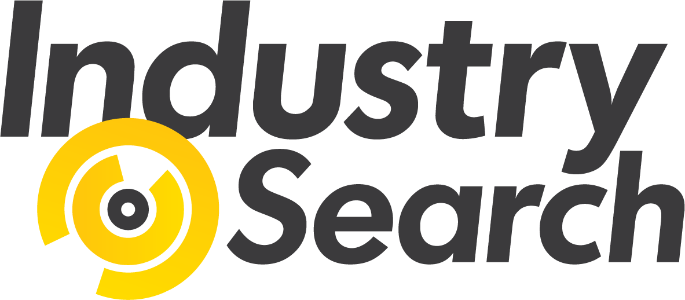
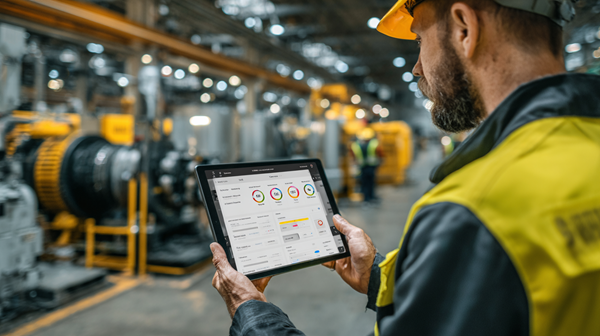
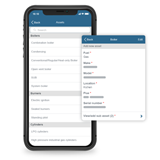
-160x160-state_article-rel-cat.png)

-160x160-state_article-rel-cat.png)
